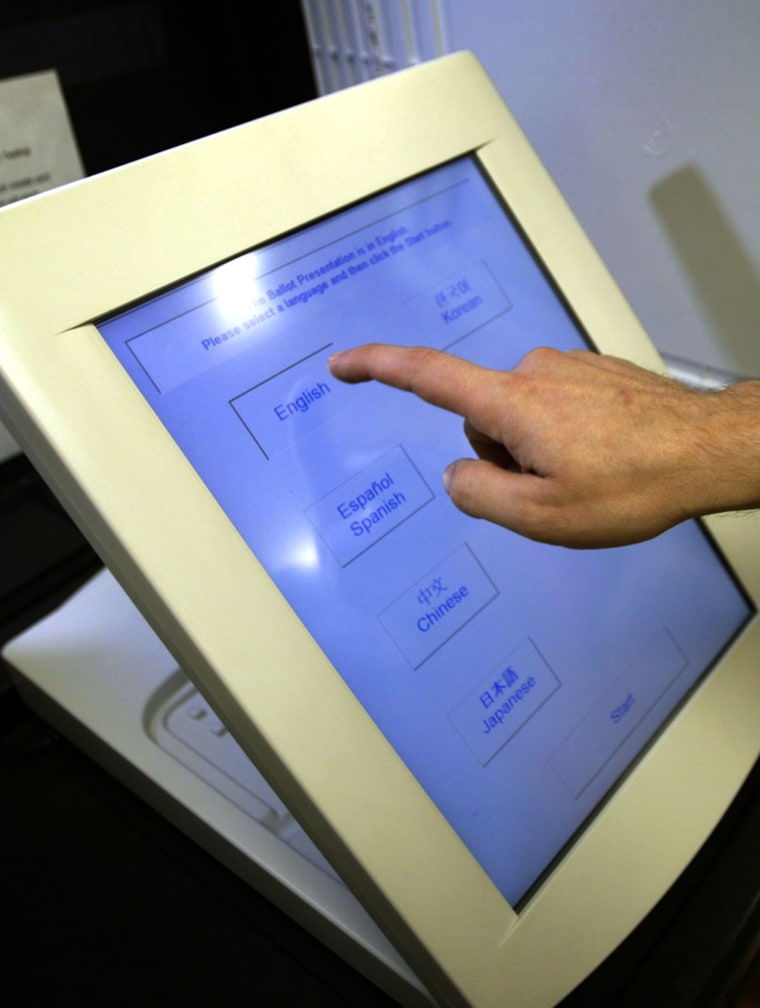California will allow voting at electronic voting machines in November at all but four counties, after an improvement in security measures, the state’s top election official says.
In April, California Secretary of State Kevin Shelley blasted the state’s largest e-voting machine supplier, Diebold, and called for a criminal investigation into the Ohio-based firm.
The Democrat decertified Diebold’s AcuVote-TSx Voting System, which was used in four counties and accounts for a third of all of California’s electronic voting machines, because of problems in the March election. Those four counties — San Diego, Solano, San Joaquin and Kern — will use paper ballots instead.
Shelley gave 11 other counties the chance to recertify their electronic voting machines if they upgraded their systems to provide a paper receipt for voters and meet other conditions.
“I am pleased to announce that all 11 counties using electronic touchscreen voting machines have met the conditions necessary for statewide certification of their voting equipment,” Shelley said in a statement Tuesday.
The counties gaining the new certification included several near San Francisco, Santa Clara at the heart of Silicon Valley and Los Angeles.
In April, Shelley said that Diebold had engaged in ”reprehensible” deceitful tactics and asked the state attorney general’s office to launch a probe.
A spokeswoman for that office said the investigation was under way and was scheduled to be completed by Sept. 6.
Shelley’s passionate remarks contributed to national concerns about possible security shortcomings in electronic voting systems that could lead to fraud or manipulation.
California has invested more than $139 million on electronic touch screen technology, and during the March presidential primary vote 42 percent of the state’s voters could have had access to 42,714 electronic voting machines.
